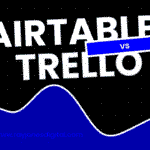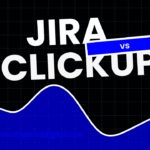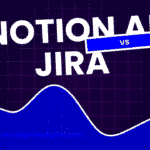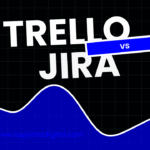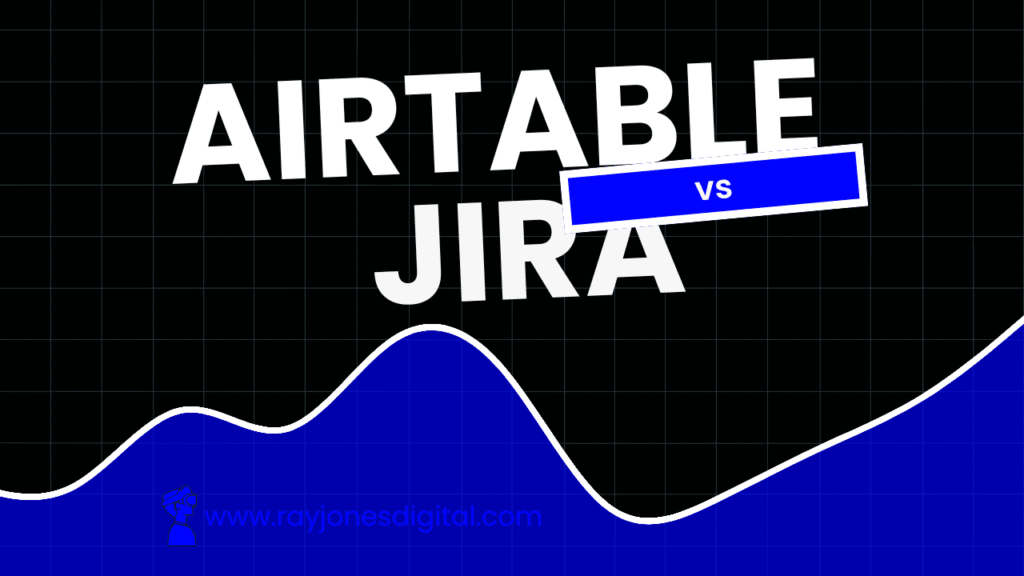
Two heavyweights dominate the project management landscape: Airtable vs Jira. While both platforms help teams organise work and track progress, they represent fundamentally different approaches to project coordination and task management.
Jira has long been the go-to solution for software development teams, offering robust issue tracking and agile workflow management. Airtable takes a more flexible approach, combining database functionality with visual organisation tools that adapt to various project types and team structures.
Choosing between these platforms can significantly impact your team’s productivity and project success. This comprehensive comparison examines their core features, pricing models, and real-world applications to help you select the right tool for your specific needs.
What Is Jira?
Jira stands as Atlassian’s flagship project management solution, originally designed for software development teams but now serving diverse industries. The platform specialises in issue tracking, bug management, and agile project methodology implementation.
Built around the concept of “issues”—which can represent bugs, tasks, user stories, or epics—Jira provides sophisticated workflow management capabilities. Teams can create custom workflows that mirror their development processes, from initial planning through deployment and maintenance.
Jira particularly excels in environments requiring detailed audit trails, complex permission structures, and integration with development tools. Its reporting capabilities offer deep insights into team performance, sprint progress, and project health metrics.
What Is Airtable?
Airtable revolutionises project management by blending spreadsheet familiarity with database power. Rather than forcing teams into rigid project management frameworks, Airtable adapts to existing workflows while providing structure and organisation.
The platform organises information as records within tables, with each record containing multiple field types including text, dates, attachments, and relationships to other records. This flexibility makes Airtable suitable for project management, content planning, resource tracking, and team coordination.
Airtable’s visual approach to data organisation—through grid, gallery, calendar, and kanban views—makes complex project information accessible to all team members, regardless of their technical background.
Core Features Comparison
Project Organisation and Structure
Jira structures projects hierarchically with epics containing user stories, which break down into tasks and subtasks. This approach aligns perfectly with agile methodologies but can feel restrictive for non-software projects. The platform enforces consistent project structure across teams, ensuring standardised workflows and reporting.
Airtable organises projects as flexible databases where teams define their own structure. Projects can be broken down into any logical components—campaigns, phases, deliverables, or custom categories. This flexibility accommodates diverse project types but requires more initial setup and ongoing maintenance.
Workflow Management
Jira provides sophisticated workflow engines that can model complex business processes. Teams can create custom workflows with specific transition rules, approval processes, and automated actions. The platform supports multiple workflow schemes for different project types while maintaining consistency across the organisation.
Airtable offers workflow management through status fields, automation rules, and view filtering. While less complex than Jira’s workflow engine, Airtable’s approach proves more accessible for teams without dedicated process administrators. Workflows remain visible and modifiable by all team members.
Task and Issue Tracking
Jira excels at detailed issue tracking with comprehensive audit trails, comment threads, and status histories. Each issue can contain extensive metadata including priority levels, story points, time tracking, and custom fields. The platform maintains detailed records of all changes and interactions.
Airtable handles task tracking through customisable record types with relevant fields for each project context. While offering less granular tracking than Jira, Airtable’s approach proves more intuitive for teams focused on project delivery rather than detailed process documentation.
Collaboration and Communication
Jira facilitates collaboration through comment threads, @mentions, and notification systems. The platform integrates with Confluence for documentation and supports various communication workflows. However, collaboration often feels secondary to process management.
Airtable emphasises visual collaboration through shared views, real-time editing, and intuitive commenting systems. Team members can collaborate on records through multiple view types, making project information accessible to diverse stakeholders. The platform’s visual approach encourages broader team participation.
Reporting and Analytics
Jira provides extensive reporting capabilities including burndown charts, velocity tracking, and custom dashboards. The platform offers deep insights into team performance, sprint progress, and project health metrics. Advanced reporting features support data-driven decision making and process improvement.
Airtable offers reporting through customisable views, basic charts, and dashboard applications. While less sophisticated than Jira’s analytics, Airtable’s reporting proves more accessible for teams needing straightforward project visibility rather than detailed performance analysis.
Pricing Structure
Jira Pricing
Jira operates on a tiered pricing model based on user count and feature requirements:
- Free Plan: Up to 10 users, basic features, community support
- Standard Plan: £5.75 per user/month (up to 35,000 users, advanced features)
- Premium Plan: £11.50 per user/month (advanced permissions, unlimited storage)
- Enterprise Plan: £22.50 per user/month (enterprise security, premium support)
The free tier accommodates small teams, while enterprise plans provide advanced security and compliance features for large organisations.
Airtable Pricing
Airtable uses a feature-based pricing model with generous free tier capabilities:
- Free Plan: Up to 5 users, 1,000 records per base, basic features
- Plus Plan: £8 per user/month (5,000 records, calendar sync, advanced features)
- Pro Plan: £16 per user/month (50,000 records, automation, advanced permissions)
- Enterprise Plan: Custom pricing for large organisations
The free plan provides substantial functionality for small teams, though record limits may constrain growing projects.
User Experience and Learning Curve
Jira User Experience
Jira presents a powerful but complex interface that reflects its enterprise heritage. The platform requires significant initial configuration and ongoing administration to maintain optimal performance. New users typically need formal training or extensive documentation to become productive.
The interface prioritises functionality over simplicity, resulting in comprehensive capabilities that can overwhelm newcomers. However, teams investing in proper setup and training often find Jira indispensable for complex project management needs.
Airtable User Experience
Airtable emphasises intuitive design and visual clarity, making complex project information accessible to all team members. The platform’s spreadsheet-like interface reduces barriers to adoption while providing database-level functionality.
New users typically become productive within 30 minutes, though mastering advanced features requires deeper exploration. The visual approach encourages experimentation and gradual feature adoption rather than comprehensive initial training.
Integration and Ecosystem
Jira Integration Capabilities
Jira integrates extensively with development tools including Git repositories, CI/CD pipelines, and testing frameworks. The Atlassian marketplace provides thousands of add-ons extending functionality for specific industries and use cases.
The platform connects naturally with other Atlassian products including Confluence, Bitbucket, and Trello. Third-party integrations cover everything from time tracking to advanced reporting and project portfolio management.
Airtable Integration Options
Airtable’s integration marketplace connects with hundreds of popular business tools including Slack, Google Workspace, and Zapier. The platform’s automation capabilities enable sophisticated workflows that respond to data changes or scheduled events.
Teams can build comprehensive business processes using Airtable as a central information hub, coordinating activities across multiple tools and departments without requiring technical expertise.
Agile and Methodology Support
Jira Agile Capabilities
Jira provides comprehensive agile methodology support including Scrum and Kanban boards, sprint planning, and velocity tracking. The platform’s agile features accommodate both traditional and scaled agile frameworks like SAFe.
Teams can customise agile workflows to match their specific processes while maintaining compatibility with standard agile practices. Advanced features include epic planning, release management, and cross-project reporting.
Airtable Project Methodology
Airtable adapts to various project methodologies rather than enforcing specific frameworks. Teams can implement agile, waterfall, or hybrid approaches using customisable views and automation rules.
The platform’s flexibility allows teams to evolve their processes organically without being constrained by rigid methodology implementations. This approach works well for teams using modified or custom project management approaches.
Performance and Scalability
Jira Performance Characteristics
Jira handles large-scale deployments with thousands of users and complex project hierarchies. The platform’s enterprise architecture supports high-volume operations while maintaining performance through proper configuration and infrastructure management.
However, Jira’s performance depends heavily on proper administration and regular maintenance. Poorly configured instances can become slow and difficult to use, requiring dedicated technical resources.
Airtable Scalability Considerations
Airtable performs well for small to medium-sized teams and projects but may encounter limitations with very large datasets or complex automation requirements. The platform’s record limits and performance characteristics suit most project management needs without requiring technical administration.
The system’s architecture prioritises ease of use and visual performance over raw scalability, making it ideal for teams prioritising accessibility over enterprise-scale requirements.
Best Use Cases
When to Choose Jira
Software Development Teams: Jira’s deep integration with development tools and comprehensive agile support make it ideal for software projects requiring detailed issue tracking and release management.
Complex Project Hierarchies: Teams managing large projects with multiple stakeholders, detailed approval processes, and extensive reporting requirements benefit from Jira’s sophisticated workflow capabilities.
Regulatory Compliance: Industries requiring detailed audit trails, change management, and compliance reporting find Jira’s comprehensive tracking and documentation capabilities essential.
Enterprise Environments: Large organisations needing standardised processes, advanced security features, and extensive integration capabilities often require Jira’s enterprise-grade functionality.
When to Choose Airtable
Cross-Functional Teams: Teams including members from different departments with varying technical backgrounds benefit from Airtable’s intuitive interface and visual project organisation.
Creative and Marketing Projects: Teams managing campaigns, content calendars, and creative assets appreciate Airtable’s visual views and flexible data organisation.
Small to Medium Businesses: Organisations needing powerful project management capabilities without dedicated IT resources find Airtable’s simplicity and automation features ideal.
Rapid Prototyping and Iteration: Teams needing to quickly adapt their project management processes benefit from Airtable’s flexibility and ease of modification.
Technical Considerations
Jira Technical Requirements
Jira requires significant technical infrastructure and ongoing administration to maintain optimal performance. The platform benefits from dedicated system administrators who can configure workflows, manage permissions, and optimise performance.
Cloud deployment reduces infrastructure requirements but still requires process administration and user management. Self-hosted deployments provide maximum control but require substantial technical resources.

I am Ray Jones Digital
My current occupations: a Digital Marketer, Local SEO expert, Link Builder, and WordPress SEO specialist. Shopify SEO, Ecommerce Store Management, and HTML & WordPress Developer I have been practicing the above mentioned services for more than 10 years now As an SEO expert working with your ongoing projects.
